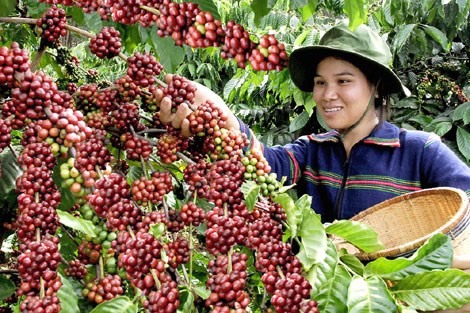 Economy
Economy

Coffee prices in Việt Nam have reached the highest level in six years owing to the shortage of export-qualified beans after the harvest was hit by rains.
 |
| Coffee prices in Việt Nam have reached the highest level in six years owing to the shortage of export-qualified beans after the harvest was hit by rains. — Photo vietnamplus.vn |
HÀ NỘI — Coffee prices in Việt Nam have reached the highest level in six years owing to the shortage of export-qualified beans after the harvest was hit by rains.
The price is in the range of VNĐ46,500 (US$2.04) per kilo of robusta beans in the Central Highlands province of Lâm Đồng, and VNĐ47,300 ($2.08) per kilo in Đắk Lắk Province.
This is the highest level that coffee prices have risen since September 16, 2011, when prices climbed to VNĐ47,400 per kilo.
First water shortage in dry season and then unseasonal rain in the Central Highlands from October to December last year has badly affected the 2016-17 crop harvest, both in terms of productivity and quality.
Việt Nam’s coffee output from the current crop has fallen by 11 per cent against the previous season, the International Coffee Organization has reported. In 2016, 134,600 hectares of coffee trees in the region saw reduced output, while nearly 7,900 hectares of trees died or did not produce any coffee beans.
The Central Highlands region has 576,800 hectares of coffee trees, accounting for 89 per cent of the country’s total coffee cultivation. Việt Nam’s coffee accounts for one-fifth of the world coffee beans output.
It is currently dry season in the Central Highlands, and water shortage is a big problem. The Steering Committee for Central Highlands recently confirmed that water resources in the region will be able to supply sufficient water through irrigation projects, rivers, streams and wells to irrigate coffee cultivations until the end of the dry season. — VNS




